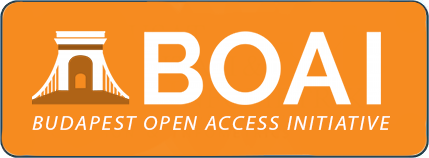Nurturing An Islamic Identity Throughout Familial Conflict Among New Reverts : A Critical Review
Pembangunan Identiti Muslim dalam Kalangan Mualaf yang Melalui Konflik Keluarga: Satu Sorotan Kritikal
DOI:
https://doi.org/10.33102/jsi2019.4.1.04Keywords:
Islamic Identity, Nurturing, Psychological Dissociation, ReversionAbstract
In regards to the integrated fields of psychology, da’wah and the Islamic studies, little research has been conducted to examine the areas of identity sustainment and/ or psychological dissociation in the process of Islamic reversion. Admittedly, while a few studies have broached on the difficulties of reverts adapting to an Islamic lifestyle, there is a gap in understanding how their very identities are affected by the factors of Islamic reversion and psychological dissociation due to conflict. In light of the above, this paper aims to investigate the phenomenon of nurturing an Islamic identity throughout the existence of familial conflict among new reverts to Islam by critically reviewing the literature of various researches to examine three main influences in conjunction to the research phenomenon above. The first is the influence of a familial misconception of Islam on the existence of familial conflict. The second is the influence of familial conflict on a difficulty sustaining an Islamic identity, and the third is the influence of psychological dissociation on sustaining an Islamic identity. Consequently, this critical review was conducted by analyzing and discussing the findings from both locally Malaysian and international researches concerning the three specified fields mentioned above. In conclusion, this paper was written with the hopes of opening up new approaches of dialogue between the global models of religion in the human psyche and their Muslim counterparts, with the ultimate aim of inducing a dialogue which would enrich both perspectives, and advance the fields of psychology, Da’wah and the Islamic studies.
Abstrak: Berhubung dengan integrasi antara bidang psikologi, dakwah dan pengajian Islam, tidak banyak penyelidikan yang telah dijalankan bagi mengkaji pemeliharaan dan kelestarian identiti dan/ atau pemisahan psikologi sepanjang proses pemelukan agama Islam. Walau pun terdapat kajian yang mengulas tentang kepayahan-kepayahan dalam kalangan mualaf untuk menyesuaikan diri dengan cara hidup Islam, masih terdapat jarak di dalam memahami bagaimana identiti mereka dikesan oleh faktor-faktor pemelukan Islam dan pemisahan psikologi yang disebankan oleh konflik keluarga. Oleh yang demikian, tujuan kertas kerja ini adalah untuk mengkaji fenomena pengasuhan identiti Muslim sepanjang wujudnya konflik kekeluargaan dalam kalangan mualaf baru, dengan melihat kembali secara kritikal beberapa kajian terdahulu yang mengkaji tiga pengaruh utama dalam fenomena penyelidikan di atas. Pengaruh yang pertama ialah: pengaruh daripada salah faham terhadap Islam di kalangan keluarga yang mencetuskan konflik kekeluargaan; kedua, pengaruh daripada sokongan sekeliling ke atas kebolehan mualaf untuk mengasuh identiti Muslim; dan yang ketiga: kesan pemisahan psikologi ke atas pengasuhan identiti Muslim. Oleh sebab ini, kajian yang bersifat kritikal ini telah dibuat secara menganalisa dan berdiskusi tentang dapatan daripada kajian dari dalam dan juga luar Malaysia berhubung dengan tiga bidang pengkhususan tersebut. Sebagai kesimpulan, penulisan ini dibuat dengan harapan untuk membuka ruang dialog yang lebih luas, yang selama ini kurang diberikan perhatian, antara model global penukaran agama dengan kesan psikologi ke atas jiwa manusia, dengan tujuan untuk mendorong dialog yang lebih progresif, yang akan memperkayakan lagi bidang psikologi, dakwah dan pengajian Islam.
Downloads
References
Abdullah, N.A.M.T., Abdul Kadir, F.A., Tibek, S.R & Abdullah, A. (2012). Program dakwah Islamiah pertubuhan kebajikan Islam Malaysia (PERKIM) kebangsaan kepada saudara muslim: satu tin-jauan dari segi pendidikan. In: International Conference on Research in Islamic and Arabic Language Education. Mecca: Saudi Arabia.
Abdullah Tan @ Tan Ai Pao, N.A.M., & Md Sham, F. (2009). Keperluan Memahami Psikologi Saudara Muslim. Jurnal Hadhari, (2), 83-97. Retrieved from http://journalarticle.ukm.my/243/1/1.pdf.
Ab. Razak, A. (2017). Cultural Construction of Psy-chiatric Illness in Malaysia. Malaysian Journal of Medical Sciences 24(2), 1-5. Doi:10.21315/mjms2017.24.2.1.
American Psychiatric Association: Diagnostic and Statistical Manual of Mental Disorders, Fifth Edition. (2013). Arlington, VA: American Psy-chiatric Association.
Awang, A., & Mohd Khambali @ Hambali, K. (2014). Dorongan Pemelukan Agama Islam dalam Kalangan Komuniti Minoriti di Sebuah Negeri Majoriti Melayu. International Journal of the Malay World and Civilisation 2 (3), 3-12.
Awang, A. & Mohd Khambali @ Hambali, K. (2015). Faktor Pemelukan Agama Islam: Kajian Terhadap Komuniti Saudara Muslim Cina di Negeri Terengganu. MANU Journal, (22), 21-45.
Awang, A., & Mohd Khambali @ Khambali, K. (2015). Media Influence In The Dialogue of Life: From The Perspectives of A Revert Muslim. Ma-laysian Journal of Communication 31, (2), 47-60.
Butler, L. (2006). Normative Dissociation. Psychiatric Clinics of North America 29 (1), 45-62. Doi: 10.1016/j.psc.2005.10.004.
Cann, A., Calhoun, L.G., Tedeschi, R.G., Kilmer, R.P., Gil-Rivas, V., Vishnevsky, T., & Danhauer, S.C. (2009). The core beliefs inventory: a brief meas-ure of disruption in the assumptive world. Anxie-ty, Stress, & Coping, 23 (1), 19-34. Doi:10.1080/10615800802573013.
Dissociation and the Dissociative Disorders. (2009). Edited by Dell, P., & O’Neil, J. New York: Routledge.
Dorahy, M., & Lewis, C. (2001). The Relationship between Dissociation and Religiosity: An Empir-ical Evaluation of Schumaker's Theory. Journal for the Scientific Study of Religion, 40(2), 315-322. Retrieved from http://www.jstor.org/stable/1387953.
Draman, M.S. (2010). Pengurusan dakwah terhadap saudara baru: kajian di pejabat agama Islam dae-rah klang Selangor darul ehsan. Master’s thesis, University Malaya.
Foo, X., Alwi, M., Ismail, S., Ibrahim, N., & Osman, Z. (2014). Religious Commitment, Attitudes Toward Suicide, and Suicidal Behaviors Among College Students of Different Ethnic and Religious Groups in Malaysia. Journal of Religion and Health, 53(3), 731-746. Retrieved from http://www.jstor.org/stable/24485188.
Geertz, Clifford. (1973). The interpretation of cul-tures. New York: Basic Books.
Guleng, M.P., Muhamat @ Kawangit, R., & Mohamad, A.D. (2014) Penyesuaian diri mualaf terhadap masyarakat dalam kalangan pelajar Institut Dakwah Islamiah PERKIM (IDIP). Al-Hikmah, 6, 78-93. ISSN 1985--6822
Gupta, C. (2009). Hindu Women, Muslim Men: Love Jihad and Conversions. Economic and Political Weekly, 44(51), 13-15. Retrieved from http://www.jstor.org/stable/25663907.
Hak, N. (2012). Rights of a Wife in the Case of Con-version to Islam under Family Law in Malaysia. Arab Law Quarterly, 26(2), 227-239. Retrieved from http://www.jstor.org/stable/23234655.
Hanafiah, A.N., & Van Bortel, T. (2015). A Qualita-tive Exploration of the Perspectives of Mental Health Professionals on Stigma and Discrimina-tion of Mental Illness in Malaysia. International Journal of Mental Health Systems 9, (10), 1-12. Doi: 10.1186/s13033-015-0002-1.
Hodges, Brian David, Ayelet Kuper & Scott Reeves. "Qualitative Research: Discourse Analysis", BMJ: British Medical Journal, 337, no. 7669 (2008): 570-72.
Howard, J. (2000). Social Psychology of Identities. Annual Review of Sociology, 26, 367-393. Re-trieved from http://www.jstor.org/stable/223449.
Iqbal, Z. (2010). Islamophobia or Islamophobias: To-wards Developing A Process Model. Islamic Studies, 49(1), 81-101. Retrieved from http://www.jstor.org/stable/41429246.
Ismail, S.Z. (2016) Faith and freedom: The Qur’anic notion of freedom of religion vs. the act of changing religion and thoughts on the implica-tions for Malaysia. Religions, 7 (7). ISSN 2077-1444.
Jambunathan, S.T., Gill, J.S., Kanagasun-Dram, S., & Hui, K.O. (2008). Dissociative identity disorder: an attempt to understand the disorder in Malaysian context. ASEAN Journal of Psychiatry 9 (2), 118-125. Retrieved from: http://www.myjurnal.my/filebank/published_article/15391/AJP_2008_Stephen.pdf.
Kassim, S.B.M., Abdullah, M.S.Y., & Baba, Z. (2013). A survey of problems faced by converts to Islam in Malaysia. Journal of Social Sciences and Hu-manities 8 (1), 085-097.
Kawangit, R.M. (2016). Pembangunan Dakwah Mual-laf Di Malaysia: Cabaran Dalam Masyarakat. In: 1st International Keynote Speech on Mualaf De-velopment and Empowerment (De Mualaf). Ma-laysia.
Kawangit, R.M. (2014). Tahap Kefahaman, Pen-erimaan dan Integrasi Golongan Muallaf Cina Terhadap Kebudayaan Masyarakat Melayu di Negeri Selangor. Jurnal Al-Hikmah 6, 66-77.
Knudson, K., & Stojanowski, C. (2008). New Direc-tions in Bioarchaeology: Recent Contributions to the Study of Human Social Identities. Journal of Archaeological Research, 16(4), 397-432. Re-trieved from http://www.jstor.org/stable/41053255.
Krauss, S., Hamzah, A., Suandi, T., Noah, S., Juhari, R., Manap, J., Mahmood, A. (2006). Exploring Regional Differences in Religiosity among Mus-lim Youth in Malaysia. Review of Religious Re-search, 47(3), 238-252. Retrieved from http://www.jstor.org/stable/3512356.
Lawrence, B. (2002). Conjuring with Islam, II. The Journal of American History, 89(2), 485-497. Retrieved from http://www.jstor.org/stable/3092169.
Lipka, M., & Hackett, C. (2017). Why Muslims are the world’s fastest-growing religious group. Pew Re-search Center. Retrieved from http://www.pewresearch.org/fact-tank/2017/04/06/why-muslims-are-the-worlds-fastest-growing-religious-group/.
Lopez, A., Huynh, V., & Fuligni, A. (2011). A Longi-tudinal Study of Religious Identity and Participa-tion During Adolescence. Child Development, 82(4), 1297-1309. Retrieved from http://www.jstor.org/stable/41289843.
Mian, H. (2010). What Is Islam? A Conversation with the Magisterial Intellectuals of the Past. Counter-points, 346, 65-76. Retrieved from http://www.jstor.org/stable/42980511.
Miller, L. & Kelley, S. (2005). Relationships of Relig-iosity and Spirituality with Mental Health 460 and Psychopathology. In Handbook of the Psy-chology of Religion and Spirituality, edited by R. F. Paloutzian and C. L. Park, pp. 460-479. New York: The Guilford Press. Retreived from http://library.aceondo.net/ebooks/Religious_Studies/handbook_of_the_psychology_of_religion.pdf#page=479.
Mohd Khambali, K., Awang, A., Sintang, S., Abdul Rahman, N.F., Wan Ramli, W.A., & Mat Karim, K.N. (2017). Muhajir Interactional Generator and Religious Tolerance among New Muslim-Muslim-Non-Muslim. Akademika 87 (2), 63-76. Retrieved from https://umexpert.um.edu.my/file/publication/00002846_152518_70342.pdf.
Mohamad, M. (1997). ISLAM: THE MISUNDER-STOOD RELIGION. Islamic Studies, 36(4), 691-700. Retrieved from http://www.jstor.org/stable/23076041.
Mohamed, B., & O'brien, J. (2011). Ground zero of misunderstanding. Contexts, 10(1), 62-64. Re-trieved from http://www.jstor.org/stable/41960694.
Muhamat @ Kawangit, R., & Saringat, S. (2014). Dakwah among Indian Mualaf in Malaysia. Is-lamiyyat : Jurnal Antarabangsa Pengajian Is-lam; International Journal of Islamic Studies, 36 (2). pp. 91-96. ISSN 0216-5636.
Mullen, John D. "Nature, Nurture, and Individual Change." Behavior and Philosophy, 34 (2006): 1-17.
Nair, H.L. & Chuan, G.C. (2017). The Effects of Con-version to Islam of a Non-Muslim Spouse on the Custody of Minor Children-Thoughts and Trends from a Malaysia Perspective. Advanced Science Letters, 23 (1). pp. 688-691. ISSN 1936-6612
Nasr, S. (1997). Islamic Unity — The Ideal And Ob-stacles In The Way Of Its Realization. Islamic Studies, 36(4), 657-662. Retrieved from http://www.jstor.org/stable/23076035.
Neuman, W. Lawrence. Social Research Methods: Qualitative and Quantitative Approaches: 7th edition. (USA: Pearson Higher Education, 2013).
Abdul Rahim, N.H., & Zakaria, I. (2014). PERKIM Propagation to Chinese Ethnic in Malaysia. Is-lamiyyat 36 (1), 63-70. Retrieved from http://ejournals.ukm.my/islamiyyat/article/viewFile/7366/2994.
Oestergaard, K. (2009). The Process of Becoming Muslim: Ritualization and Embodiment. Journal of Ritual Studies, 23(1), 1-13. Retrieved from http://www.jstor.org/stable/44369022.
Pajevic, I., Sinanovic, O., & Hasanovic, M. (2005). Religiosity and Mental Health. Psychiatria Dan-ubina 12, (1-2), 84-89. Doi: 10.2466/PR0.85.7.1088-1088.
Pinker, Steven. "Why Nature & Nurture Won't Go Away”, Daedalus, 133, no. 4 (2004): 5-17.
Power, L., & McKinney, C. (2014). The Effects of Re-ligiosity on Psychopathology in Emerging Adults: Intrinsic Versus Extrinsic Religiosity. Journal of Religion and Health, 53(5), 1529-1538. Retrieved from http://www.jstor.org/stable/24485226.
Preston, J., & Epley, N. (2005). Explanations versus Applications: The Explanatory Power of Valua-ble Beliefs. Psychological Science, 16(10), 826-832. Retrieved from http://www.jstor.org/stable/40064321.
Rahmawati, I., & Desiningrum, D.R. (2018). Pengala-man Menjadi Mualaf: Sebuah Interpretive phe-nomenological Analysis. Jurnal Empati 7 (1), 92-105.
Rutter, Michael. "Nature, Nurture, and Development: From Evangelism through Science toward Policy and Practice”, Child Development, 73, no. 1 (2002): 1-21.
Ryad, U. (2017). On his Donkey to the Mountain of Ἁrafāt: Dr. Van der Hoog and his Hajj Journey to Mecca. In Ryad U. (Ed.), The Hajj and Europe in the Age of Empire (pp. 185-216). Leiden; Boston: Brill. Retrieved from http://www.jstor.org/stable/10.1163/j.ctt1w8h34p.13.
Sahad, M.N., Chu Abdullah, S.A., & Abdullah, S. (2013). Malaysian News Report on Muslim Con-verts’ Issues: A Study on Malaysiakini. Interna-tional Journal of Humanities and Social Science 3 (13), 219-230.
Sahraian, A., Gholami, A., Javadpour, A., & Omidvar, B. (2013). Association Between Religiosity and Happiness Among a Group of Muslim Under-graduate Students. Journal of Religion and Health, 52(2), 450-453. Retrieved from http://www.jstor.org/stable/24484996.
Shaharuddin, S. A., Abdul Majid, M., Abdullah, M.Y.M., Sungit, F., Abd. Hamid, Z., & Shaharud-din, H.N. (2016). Isu dan Permasalahan Mualaf (Cina) Di Malaysia. In: International Conference on Aqidah, Dakwah and Syariah. Malaysia.
Sintang, S., & Hambali, K. (2010). Dialog kehidupan di Sabah: analisis pengalaman saudara baru. In Seminar Serantau Islam dan Kesejahteraan Se-jagat. Brunei: Brunei Darussalam. Retrieved from eprints.um.edu.my/11265/.
Smith, C., & Sikkink D. (2003). Social Predictors of Retention in and Switching from the Religious Faith of Family of Origin: Another Look Using Religious Tradition Self-Identification. Review of Religious Research 45, (2), pp. 188-206. doi:10.2307/3512582.
Van Koningsveld, P. (2016). Conversion of European Intellectuals to Islam: The Case of Christiaan Snouck Hurgronje alias ʿAbd al-Ghaffār. In Agai B., Ryad U., & Sajid M. (Eds.), Muslims in Inter-war Europe: A Transcultural Historical Perspec-tive (pp. 88-104). LEIDEN; BOSTON: Brill. Re-trieved from http://www.jstor.org/stable/10.1163/j.ctt1w8h1hd.8.
Van San, M. (2015). Lost Souls Searching for An-swers?: Belgian and Dutch Converts Joining the Islamic State. Perspectives on Terrorism, 9(5), 47-56. Retrieved from http://www.jstor.org/stable/26297433.
Walker, Marilyn A. & Johanna D. Moore, “Empirical Studies in Discourse”, Computational Linguis-tics, 23, no. 1 (1997): 1-12.
Wright, D., & Osborne, J. (2005). Dissociation, Cogni-tive Failures, and Working Memory. The Ameri-can Journal of Psychology, 118(1), 103-114. Re-trieved from http://www.jstor.org/stable/30039045.
Downloads
Published
How to Cite
Issue
Section
License
Copyright (c) 2019 Nurul Liana Faisal Azni, Yusmini Md Yusoff (Author)

This work is licensed under a Creative Commons Attribution 4.0 International License.
1. Author holds the copyright of the article.
2. Jurnal Sains Insani owns the rights to publish the article. The writer may request permission to republish the article from the editor.
3. Jurnal Sains Insani follows the APA (American Psychological Association) style for all in-text citation and list of bibliographies.











